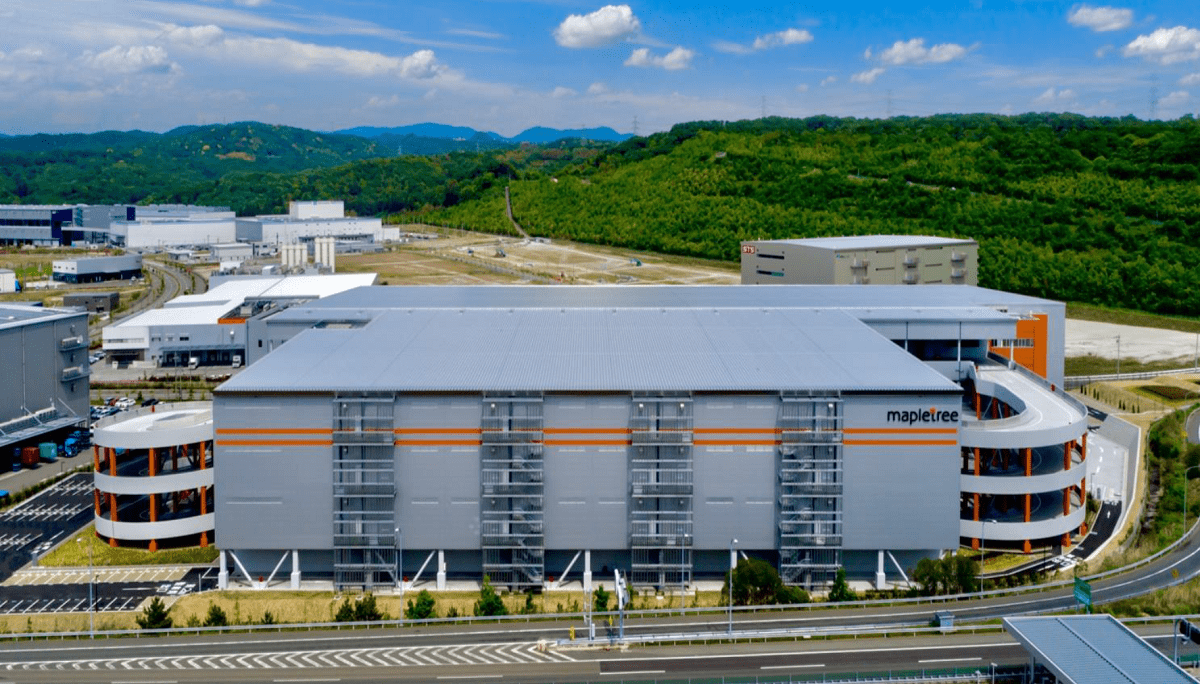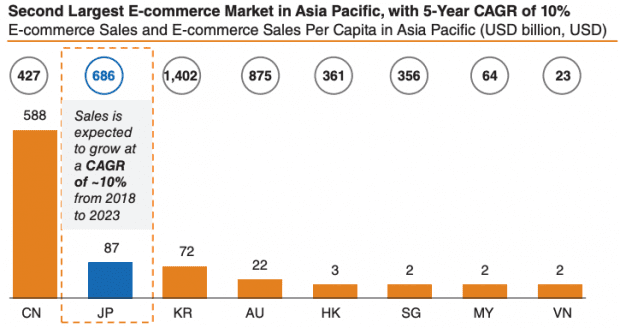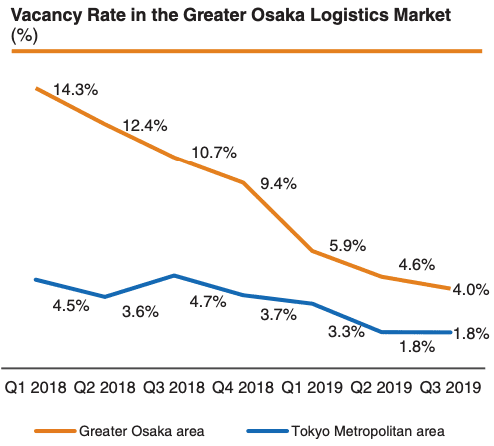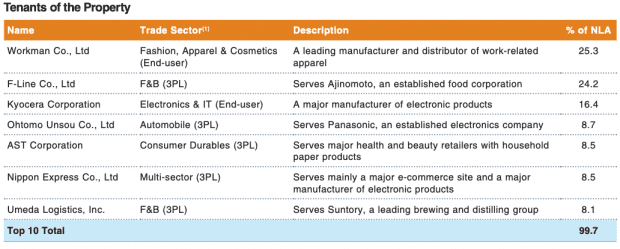
On 21 February 2020, Mapletree Logistics Trust (MLT) held an extraordinary general meeting to gain its unitholders’ approval to acquire Mapletree Kobe Logistics Centre in Japan for JPY 22,200.0 million (S$276.0 million).
This property has a net lettable area (NLA) of 84,783 sq. m and an implied net property income yield of 4.0%. Most of the acquisition cost will be financed by the drawing down of MLT’s JPY debt facilities, the issuance of onshore JPY bonds, and the issuance of acquisition fee units. According to CFO Charmaine Lum, the expected cost of borrowing to fund the acquisition is 0.9%.
Here are seven things I learned from attending the 2020 Mapletree Logistics Trust EGM:
1. This move was motivated by the e-commerce trend sweeping Japan. Japan is the second largest e-commerce market in Asia Pacific and is expected to grow at a CAGR of 10% from 2018 to 2023. Demand will come from e-commerce players who would require 2 to 3 times more space than traditional retailers.

Source: Mapletree Logistics Trust 6 Feb 2020 circular
2. The sustained demand for logistics spaces has driven the vacancy rate of logistics spaces in the Greater Osaka area down to 4.0% in Q3 2019 from 14.3% in Q1 2018. In Greater Osaka where Grade A modern warehouse facilities make up only 4.3% of its logistics market, Mapletree Kobe Logistics Centre is able to command a sizeable rent premium between 10% to 30% over traditional warehouses.

Source: Mapletree Logistics Trust 6 Feb 2020 circular
3. The property has an occupancy rate of 99.7% with a WALE of 4.2 years. The top 10 tenants of the property take up 99.7% of the NLA. 75% of the tenant base (by NLA) are in the consumer goods-related industry.

Source: Mapletree Logistics Trust 6 Feb 2020 circular
4. This deal has a pro forma DPU accretion of 2.6%, increasing MLT’s DPU from 6.094 cents to 6.255 cents. NAV will remain the same at S$1.18. After the acquisition, Japan’s gross revenue by contribution will increase from 10% to 12%.

Source: Mapletree Logistics Trust 6 Feb 2020 circular
5. A unitholder said that MLT’s gearing limit of 39.1% after the acquisition is close to the regulatory limit of 45% and wanted to know how the management would handle the limited debt headroom for future acquisitions? CEO Ng Kiat said that this is part of MLT’s capital recycling strategy. After the acquisition of Tsing Yi in Hong Kong, MLT did a major acquisition from its sponsor – acquiring properties in Korea and Australia through an equity fund raising to reduce its gearing ratio.
6. A unitholder wanted to know the difference between a modern and traditional warehouse. Chairman Lee Chong Kwee explained that there are a few features that define a modern warehouse. A modern warehouse has a ramp instead of a cargo lift. It has a big floor plate with few pillars to store equipment and enhance productivity. Lastly, a modern warehouse has a floor loading to store heavy equipment and a high ceiling to store goods.
7. A unitholder wanted to know the price difference between different levels in a modern warehouse. The CEO said that the price decreases by 5 to 10% as you go up the levels. MLT attracts tenants by having fewer columns, allowing for greater efficiency for e-commerce players who want to embark on automation projects.
Liked our analysis of this EGM? Click here to view a complete list of EGMs and AGMs we’ve attended »



